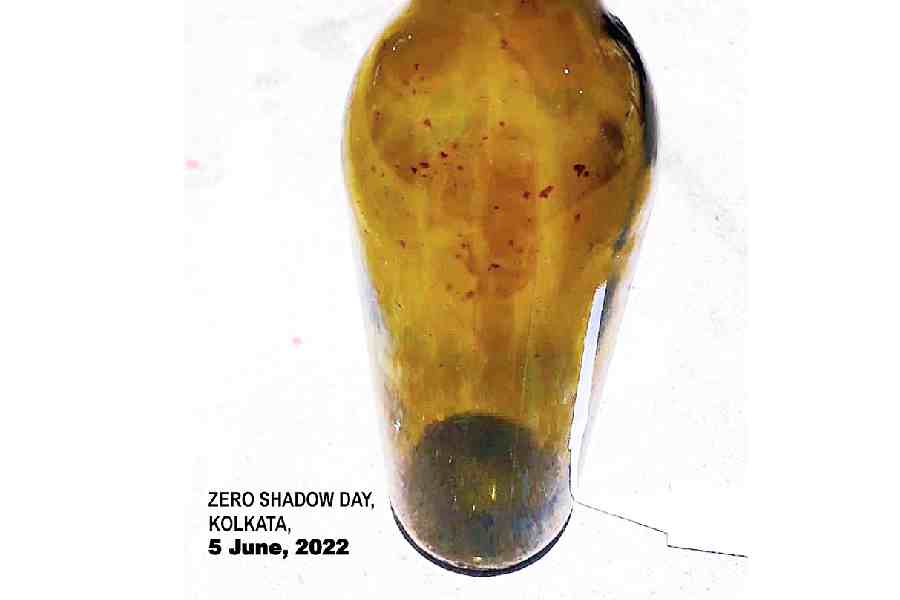In our everyday life, we do not give much importance to celestial events except during solar and lunar eclipses, lining up of planets in the sky or occasional appearances of meteors and comets.
On these occasions, people become more interested. Our celestial environment becomes more apparent and interesting than in normal times.
Zero Shadow is one such event. Sunlight falling on an object does not cast any shadow for some fleeting moments on two particular days of the year for people living between the Tropic of Cancer and the Tropic of Capricorn.
Since the Earth’s spin axis is tilted to its revolution axis around the Sun by an angle of 23.5 degrees, the mid-noon position of the Sun, also called the solar noon, is exactly overhead for two days in a year in any geographical location situated between +23.5 degree and -23.5 degree latitudes, known as the Tropic of Cancer and the Tropic of Capricorn, respectively.
On these days, the sunlight falling on an object will not cast a shadow at the local noon, when the Sun is almost perpendicular to any object. Because of the tilt of the Earth’s spin axis around itself and its revolution axis around the Sun, every day at local noon, the Sun appears at a different elevation and on Zero Shadow Day (ZSD), it is exactly at the Zenith, i.e., overhead, and an object loses its shadow.
ZSD occurs twice a year, once when the Sun is moving apparently northwards (from December 21 to June 21, or Uttarayan), and once when the Sun is moving southwards (from June 21 to December 21, or Dakshinayan).
This year the Zero Shadow Day for Calcutta, around 2,500km from the Equator and around 93.5km from the Tropic of Cancer, which passes close to the town of Krishnagar in Nadia district, will be on June 5. On that day any object will lose its shadow at the Zero Shadow Moment at 11.34IST.
The Sun will be exactly overhead at noon on that day for any place situated at the latitude of about 22.5 degrees North, though at different times for different locations in India. The Zero Shadow moment will again occur for Calcutta and surrounding areas on July 7 around 11.41IST, when mid-noon Sun will be apparently moving towards south, which is also called Dakshinayan.
In Bengal, the first Zero Shadow day will be June 13 in Burdwan (11.38IST), June 17 in Krishnagar (11.36 IST) and June 18 in Mayapur (11.37IST), situated only 1km south of the Tropic of Cancer.
Any other place beyond this northern limit will not have any Zero Shadow days. The second Zero Shadow Day for Krishnagar will be on June 25 (11.38IST), for Burdwan June 29 (11.42IST) and for Mayapur June 24 (11.38IST).
Every year, on Zero Shadow Days, students and interested general public located between the two Tropics put out vertical poles, different objects and sometimes themselves under the sun and enjoy the zero shadow moment.
This event also reminds us of the motion and position of celestial bodies with respect to Earth, which have direct links to events on Earth like the change of seasons, tides and eclipses. So, the sky being clear, taking precaution from the afternoon Sun, one should experience this moment, which reminds us momentarily about our presence on Earth and it’s cosmic perspectives.
(The data quoted is from an app by Alok Mandavgane on behalf of the Astronomical Society of India)
